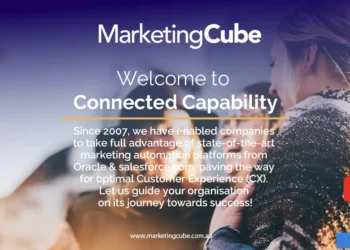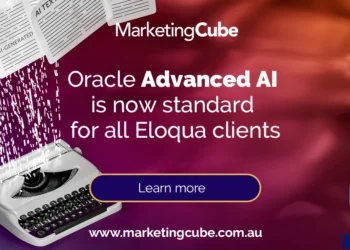
Privacy & Governance
Building & conveying trust with your audiences
As your organisation engages with your audience, there are a few simple things you can do to ensure trust is conveyed in your language and actions. It can be as simple as addressing people by name. Having easily accessible links to your privacy policy is another simple step. Conveying transparency, accountability, and security is another step.
Estimated reading time
6
minutes


01
Trust
Beyond slick campaigns that might convey trust, the best way to build trust is in the experience (CX) you deliver.
Providing customers with clear and accessible information about their data empowers them to control their online experience. This can lead to increased customer satisfaction and engagement.
Clear & honest opt-in practices:
- Avoid pre-checked boxes: Let subscribers actively choose to opt in rather than assuming their consent. Some marketing automation platforms e.g. Eloqua can pre-check an opt-in box if the person has previously opted in.
- Double opt-in: This is the gold standard. Requiring subscribers to confirm their subscription via a confirmation email ensures they genuinely want to receive your emails. We see double opt-in used less in B2B or high-value environments. However, it’s good practice in the fast paced consumer world or B2C environment.
- Transparent sign-up forms: Clearly state what type of emails subscribers will receive (newsletters, promotions, etc.) and how often. Provide a link to your privacy policy on the sign-up form.
Transparent Email Content:
- Accurate subject lines: Avoid clickbait or misleading subject lines. Ensure they accurately reflect the email’s content. Personalisation can convey trust, and research shows it can have a positive impact on your open rates.
- Clear “From” information: Use a recognisable sender name and email address. Avoid being creative with multiple “From” names.
- Provide value: Focus on delivering relevant and valuable content that meets subscribers’ needs. Use your collected data to tailor audiences for key messages; you don’t have to email everyone everything you have.
- Honest product/service descriptions: Avoid exaggerated claims or misleading information.
- Disclose affiliate relationships: If your emails contain affiliate links, clearly disclose this information. When working with business partners, be clear about where a person’s data will go if they opt in. e.g., Are you sharing all of the registrant data with your business partner?
Data Privacy and Control:
- Easy-to-find privacy policy: Make your privacy policy easily accessible on your website and in your emails.
- Clear data usage information: Explain how you collect, use, and store subscriber data.
- Preference centres: Allow subscribers to control the frequency and type of emails they receive. We’ve covered this topic a number of times during our monthly webinars. You can discover more about Preference Centres here,
- Easy unsubscribe process: Include a clear and visible unsubscribe link in every email. Honour unsubscribe requests promptly. Opt outs or unsubscribes are actioned immediately and automatically by platforms like Oracle Eloqua, Responsys and Salesforce Marketing Cloud. It’s ‘amateur hour’ when you see messages like “please allow 7 working days for your request to be actioned.”
- Legislative compliance: If applicable, ensure your email practices comply with relevant data privacy regulations e.g. GDPR (European Union) and CCPA (California, USA).
Building a relationship through authenticity
- Personalisation (Done well): Use personalisation to provide a relevant experience and content, but avoid being overly intrusive. Be transparent about how you use subscriber data for personalisation.
- Humanise your brand: Use a conversational tone and show the human side of your brand. Respond to customer feedback. Be careful relying on GenAI to create a conversational tone. Have you noticed GenAI doesn’t write in the first person? In most of my blog posts, I write in the first person; occasionally, I’ll use the royal “we”. This subtly reinforces to the reader that a human has been involved in the process.
- Social proof: Including testimonials and reviews can help build trust. Google Reviews, TrustPilot and other platforms can make a difference. But make sure that these are authentic.
02
Transparency
In the contemporary digital landscape, where data is a highly valued commodity, transparency is paramount for digital marketers.
Today’s consumers are increasingly aware of how their data is collected and used. They expect businesses to be upfront and honest about their data practices. A reputation for transparency enhances brand credibility and loyalty.
Conversely, a lack of transparency can lead to public backlash, reputational damage, and loss of customers.
Transparency demonstrates a commitment to respecting customer privacy. It empowers individuals to make informed decisions about whether or not to share their data.
03
Accountability
If we’re transparent about the way we manage data, accountability will follow.
Transparent data practices hold marketers accountable for how they use customer information, helping to ensure that data is used ethically and responsibly.
If we say we manage data a certain way and then clearly we manage the data differently, transparency suggests we can be held accountable.
04
Security
When people submit information via digital means, the more savvy person wants to know they’re doing it securely.
Very few of the companies we work with have any need to provide a payment gateway. This is probably the #1 activity people are nervous about: sharing credit card details with a company they may know little about. Platforms like PayPal offer peace of mind and security.
If your campaigns invite people to submit non-financial data via a form, you must ensure this can be done safely. The obvious step is Hypertext Transfer Protocol Secure ( i.e. https://www….). A form is typically a separate asset to a landing page or web page. The form sits on the page, and that page must be secure.
You can also consider a CAPTCHA service. People have to engage with CAPTCHA, while some may find it annoying – it does send a clear message that you’ve thought about security and that your brand cares about the security of the people you’re engaging with.
Some Marketing Automation platforms have built-in security features. However, most of these are geared toward restricting SPAM and BOT form submissions, like CAPTCHA.
Are your credit card details sitting on a 3×5″ card in a filing cabinet, in an office, somewhere?
I sat in a large room with many technology vendors many years ago. We were at the offices of a large Australian not-for-profit organisation. They wanted to bring all the vendors together so they could outline their requirements for a digital transformation project.
During the meeting, they presented their current challenges and requirements. For example, we were told of the rows of filing cabinets in the office containing small drawers with tens of thousands of 3×5″ cards with donor’s personal and credit card details!
There was an audible gasp from the vendors. What the! At that point, it was questionable if that practice was legal in Australia. Oddly, the organisation did not understand the risk. To their credit, they were preparing for a digital transformation; however, that alone does not guarantee transparency.
Don’t be like this organisation.
Discover how Luxaflex® achieved a Trustpilot consumer rating of 9.5/10
In summary
The foundation for a relationship is Trust. A customer will not give information to a brand they do not trust.
Using their data in ways they did not consent to breaks that trust.
Listening to your customer and presenting a unified brand engenders trust.
Transparency is not just a buzzword; it’s a fundamental principle that digital marketers must embrace to build trust, maintain ethical standards, comply with regulations, and enhance the customer experience.
By being open and honest about their data practices, marketers can foster stronger customer relationships and build a sustainable business.
We can help
Since 2007, we’ve supported hundreds of organisations to derive value from their marketing automation investment.
We can help your organisation create a CX-centred environment through strategic and technical services.
The post Transparency, accountability, security & trust first appeared on Marketing Cube | Connected Capability.
Source_link
















![The Content Marketing Matrix [Free marketing strategy graphic]](https://mgrowtech.com/wp-content/uploads/2025/08/content-matrix2-120x86.jpg)


